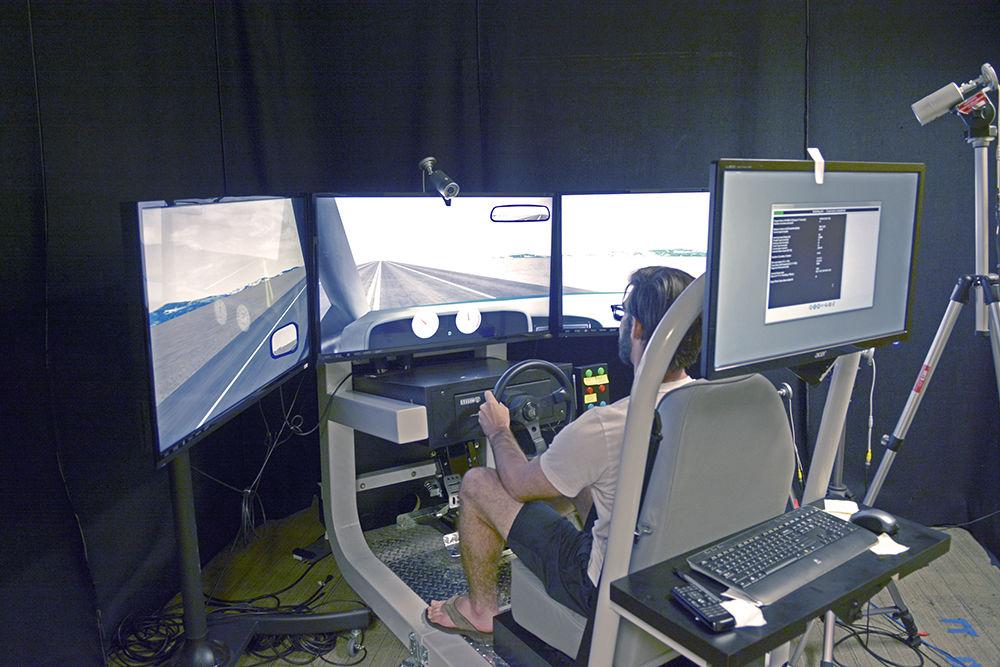At a large research school such as NC State, students often hear of the latest breakthroughs and discoveries made by researchers right here at the university. The psychology department is one which conducts interesting studies that remain applicable to daily life across many areas. Most recently, Michael Geden, a Ph.D candidate in the human factors and applied cognition program, has dug into the world of mind wandering and driving concentration by conducting a three-part study on the subject, titled “The impacts of perceptual load and driving duration on mind wandering in driving,” and the results are pivotal.
Previous studies conducted in relation to distracted driving mostly concentrate on outside distractions such as cell phone use, common road hazards and the radio use. What sets the NC State study apart from others on the subject is its focus on internal dialogue and daydreaming as potential driving distractions. The goal of the study’s initial research question was to discover how driving duration and low-perceptual load versus high-perceptual load impacts vehicular control — perceptual load represents the amount of information someone is processing at a given time.
“Simulating driving in a corn field is not representative as to what is happening,” Geden said.
To conduct this study, 40 participants were asked to drive a simulator for 20 minutes each. The simulator featured an average-sized steering wheel, pedals and three 42-inch screens. Geden programmed each driving environment and scenery the participants would see. The environments included minimal buildings, but a decent amount of trees and traffic intersections.
Measuring how much a participant’s mind wandered was an ongoing process during the experiment. To gauge this the researchers asked questions every minute, intending to discover what the participant was thinking of at that moment.
“We would provide participants with examples of what mind wandering was, such as eating while driving or thinking about cycling during a test,” Geden said. “Asking questions every minute had major limitations. … We only had a 10-second window of usable data because it is very interruptive, and we didn’t want to distract them.”
Overall, the research found a high correlation between speed variation and mind wandering occurrence. More interestingly though, perceptual load affected the amount the mind let itself drift off. High conditions of stimuli demanded more attention, and driver’s minds wandered only 41 percent of the time, whereas low conditions of stimuli allowed for more inattention for 50 percent of the time. This study was one in a three-part experiment.
“In a follow-up study we did, we looked at an hour in a simple scenario and found that after 20 minutes, minds wandered 40-60 percent, and after 40 minutes, 70 percent,” Geden said. “Adjusting your expectations to the conditions lets you hit a level of inattention that you can still function at.”
The goal of this study was not to declare that mind wandering is inherently negative in all situations, but that in certain scenarios such as merging onto the highway or other potentially dangerous places, mind wandering results in an increased car crash risk.
“An easy way to lower mind wandering would be by sending them an alert,” Geden said.
Jing Feng, an assistant professor of psychology and faculty member advising the research, determined the different applications and interpretations that can be made out of the study’s conclusions.
“This study shows it’s important to keep drivers properly challenged,” Feng said. “In fact, drivers who are under-challenged may experience increased mind wandering, which can lead to detrimental effects on driving performance.”
The third phase of the study will look at responses to unexpected braking by a lead vehicle. Current studies show drivers rely on outside cues and assumptions when deciding how to react.
“There is some evidence that our reliance on cues may be stronger while our mind wanders, making unexpected events particularly dangerous,” Geden said.













